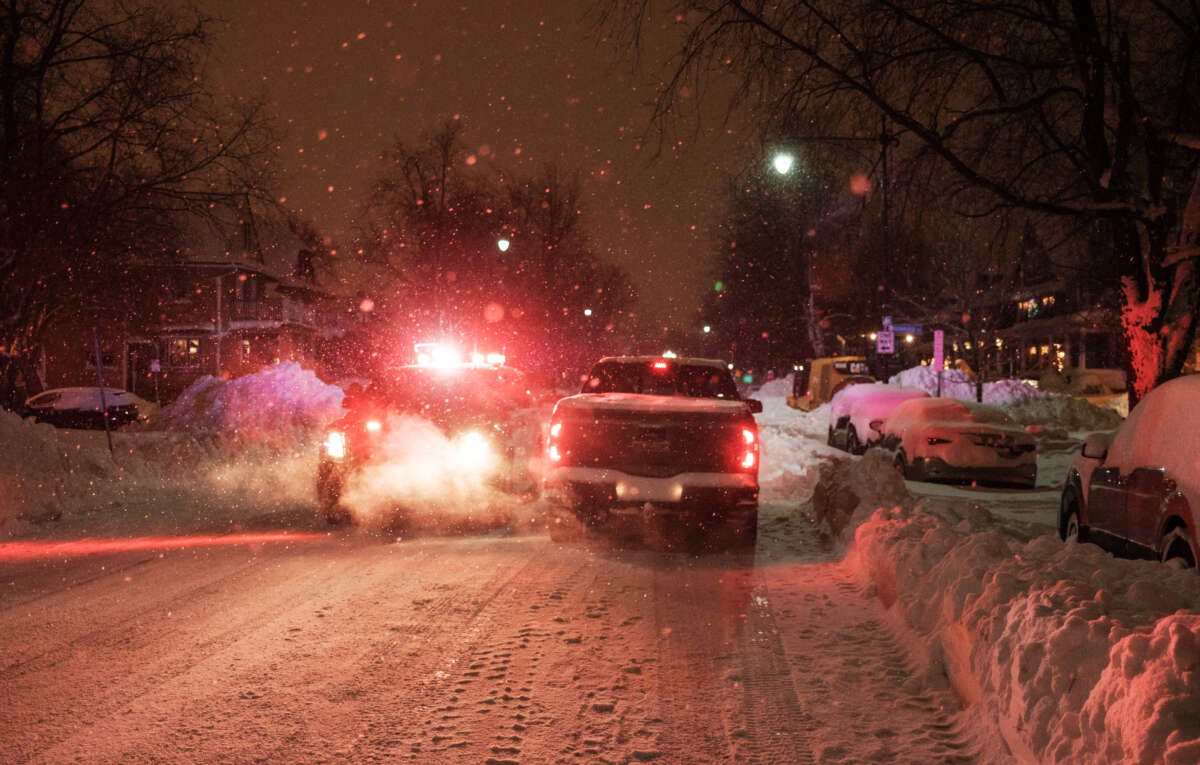Buffalo, New York, has long been known as a resilient city of “good neighbors.” From our annual snowfall totals to our sports teams, Buffalonians know how to stick together in challenging times. Many of us are struggling to dig out of the past year fraught with crises of epic proportions.
Nearly two weeks ago, our city was buried under nearly six feet of snow with 70-mph sustained winds at times. More than 30,000 homes were without power and heat for days. Residents complained via social media that the city government failed to adequately prepare for the storm. There was minimal official communication; no updates were made on the city’s website, very few social media posts included directives or updates, and only two warming centers were open in the city limits.
As this once-in-a-generation storm garnered local and national media attention, the focus was seemingly not on recovery efforts nor resources available to residents — but about “looting.” While 30 of our neighbors succumbed to the storm as a result of failed leadership, the mayor of Buffalo said in a press conference “I told you,” and that people struggling to survive were “the lowest of the low.” Resources that should have been used to rescue our most vulnerable and stranded motorists were spent on chasing down petty thefts and nonviolent crimes. After the storm passed, suburban streets and grocery stores were quick to open, but city streets waited days to see a plow.
After the racist massacre on May 14, 2022, all the talk was about racial disparities on the East Side of Buffalo. After the storm, we again we were reminded of our resilience and how those disparities remain unresolved.
Signs with “Buffalo Strong” on them still adorn dilapidated buildings and strangers who give gentle smiles wear the slogan on t-shirts and hoodies. However, not much has changed on the East Side. The data have not yet been released, but anecdotally, Black people on the East Side bore the brunt of this storm, just as we did during the pandemic and with any other crisis this city faces. The aging housing stock, food insecurity and concentrated poverty created conditions of desperation for many and death for others during the storm. Black people represent about 13 percent of the population of our county, yet accounted for more than half of the deaths resulting from the storm.
Once again, mutual aid networks, faith-based organizations and community groups came together to deliver vital food and supplies in the aftermath. Individuals braved the treacherous weather to perform wellness checks on neighbors and opened their personal homes as warming centers. That is the Buffalo I know and love. Unfortunately, we are faced with the reality that the people we keep electing to lead the city not only fail to rectify the conditions that created a segregated, impoverished Buffalo; but they are the ones who created it, and they are the ones who maintain it. My neighbors and the people who make this city livable for one another are “Buffalo Strong.” The elected officials who mishandled this storm (and so many other things) are “Buffalo Wrong.”
Our most important fundraising appeal of the year
December is the most critical time of year for Truthout, because our nonprofit news is funded almost entirely by individual donations from readers like you. So before you navigate away, we ask that you take just a second to support Truthout with a tax-deductible donation.
This year is a little different. We are up against a far-reaching, wide-scale attack on press freedom coming from the Trump administration. 2025 was a year of frightening censorship, news industry corporate consolidation, and worsening financial conditions for progressive nonprofits across the board.
We can only resist Trump’s agenda by cultivating a strong base of support. The right-wing mediasphere is funded comfortably by billionaire owners and venture capitalist philanthropists. At Truthout, we have you.
We’ve set an ambitious target for our year-end campaign — a goal of $250,000 to keep up our fight against authoritarianism in 2026. Please take a meaningful action in this fight: make a one-time or monthly donation to Truthout before December 31. If you have the means, please dig deep.
